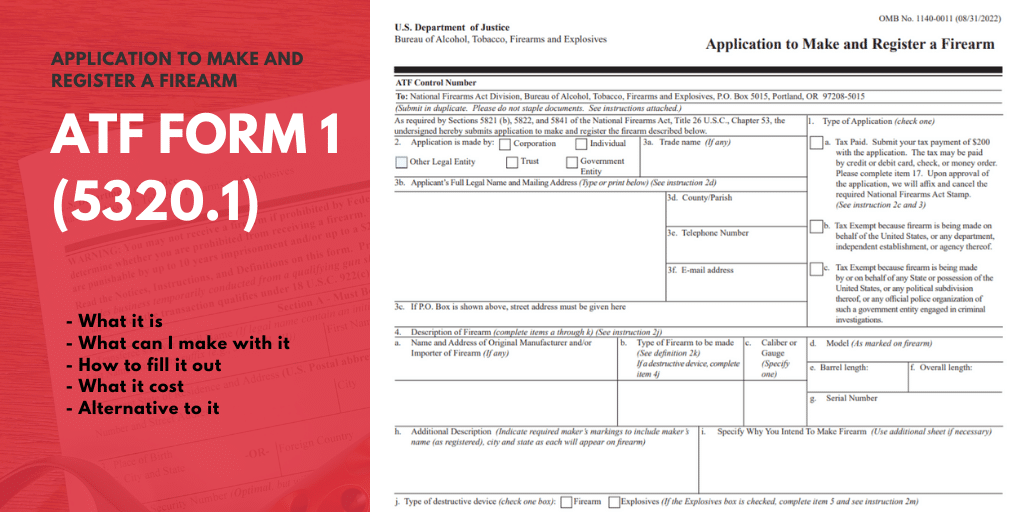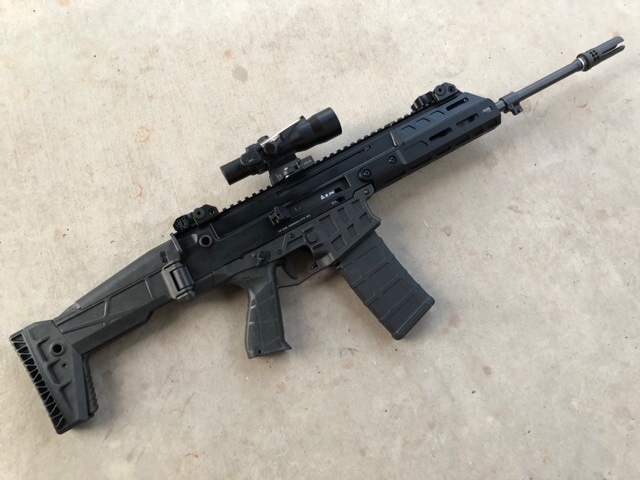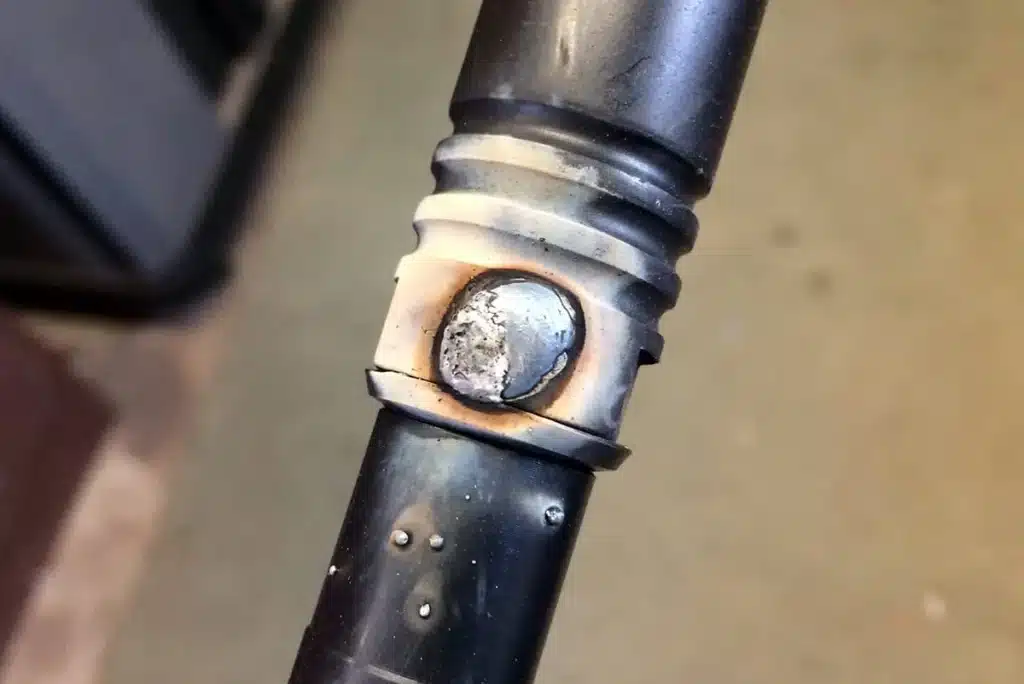(Disclaimer: The final draft of this article is dated January 5th, 2023. Since then, the ATF has published their official determinations, which should be understood, in context, when reading)
Millions of law-abiding gun owners may very well soon become felons overnight…
For the uninitiated, the ATF has released guidance on an upcoming pistol brace “ban” where they may be re-interpreting the pistol brace as a stock. The general assumption is that any braced pistol with a barrel length less than 16” will now be considered a Short-Barreled Rifle (SBR).
Therefore, in order to keep possession of a braced firearm, with a barrel less than 16”, in “pistol” configuration, there will be a requirement to register the firearm via ATF Form 5320.1, commonly referred to as a Form 1. A Form 1 is a request to manufacture an NFA firearm.
Once approved, a firearm with a barrel shorter than 16” can legally have a stock attached. Instead of the contemporary “pistol” designation, it would now be classified as an SBR.
Ignoring rumors that the re-interpretation of pistol braces is just a round-a-bout way to require mass registration, there are a couple legitimate reasons to avoid filing a Form 1 to SBR a firearm.
One of the biggest deterrents, maybe by design, is the exhausting nature of filing any request with the ATF. Without guidance, the process can be intimidating. Furthermore, the process takes time. Although Form 1 waits aren’t as long as other forms, it does take time to receive approval.
When you file a request to manufacture an NFA firearm with the ATF, you are adding the firearm to their serial database. This registry of NFA items is public & can be searched by state. While this is not an issue for many, others (specifically those weary of any sort of mass registration) may want to avoid interaction with the ATF, altogether.
,
Additionally, NFA items carry additional restrictions. For example, traveling outside of your home state with an SBR requires prior submission of ATF documentation. While you can file the form to include all applicable states once a year, it is considered a serious violation if this (one of several) added restriction is not properly heeded. In many states, you can legally transport a loaded pistol in a vehicle, whereas many of those same states do not allow transportation of a loaded rifle. (remember, SBR stands for Short-Barreled Rifle).
Most commonly, the answer to the question, “Is this worth $200 and filing the paperwork?” is simply, “No.” Many do not see the value of a shorter barrel vs. the cost, time & effort.
So, what option does a responsible gun owner have besides filing a form 1 or installing a 16” barrel?
THE PIN & WELD
Officially, the ATF measures the length of barrel to determine the classification of a firearm. For these purposes, they measure “permanently affixed muzzle devices” as part of barrel length. The ATF interprets “permanently affixed” as either pinned & welded or soldered onto the barrel. Essentially, if you “permanently” attach a muzzle device, you can increase the length of a barrel for ATF measuring protocol.
The benefit of pinning & welding is to make a legal rifle, which otherwise would be classified as an SBR & require added documentation.
The US government banned the import of “military style rifles” in 1989. Manufacturers have circumvented this ban by importing military style firearms as pistols instead of rifles. Many of these models are available with a ~14.5” barrel, so manufacturers are essentially importing the rifle as a pistol & giving customers the option of keeping it in pistol configuration or pinning & welding a muzzle device to bring the barrel at, or over 16″. Some simply pin & weld to own a proper import rifle, which was only imported as a pistol because it cannot be imported as a rifle.
Domestically, one of the reasons AR pistols became popular is because of compact size, light weight & ease of manipulation. Generally, the lighter & smaller a firearm, the easier it is to physically operate, i.e. hold, aim, lower, carry, etc. A 14.5” pinned & welded barrel vs a 16” barrel doesn’t seem like much of a difference on paper, but typically, a 14.5” barrel would be paired with a shorter handguard, which saves on weight & footprint. Once a quick-detach suppressor is mounted to the pinned muzzle device, that same 1.5” starts becoming more noticeable. Some simply pin & weld to shorten the overall footprint & weight of a firearm, while still keeping it in rifle configuration.
Either way, the most important part about deciding whether to pin & weld or not, is most certainly picking which device you will “permanently” affix to the muzzle. Generally, a muzzle device which also can be utilized as a suppressor mount is the best choice. If a barrel has a non-suppressor adapter muzzle device “permanently” affixed to the muzzle, there is no option to mount a suppressor, later. Therefore, using a muzzle device which also serves as a suppressor mount is the best option, long-term, for most users.
While the ATF interprets a pin & weld as “permanent,” they technically are not. A pin & weld can be removed, however, the barrel threads may be destroyed in the process. This explains why, for the most part, the pin & weld is generally considered permanent. The permanent nature of pinning & welding is not inherently a disadvantage, however, picking the correct muzzle device is essential. It is best to choose the correct muzzle device the first time, to avoid potentially damaging or destroying the barrel in effort to replace it. The modular nature of the AR-15 platform has the advantage of simply replacing the barrel, as opposed to other proprietary designs.
The only real disadvantage to pinning & welding is that the firearm is no longer in pistol configuration, therefore, it’s now a long-rifle, legally. In the near past, keeping a firearm in pistol configuration was a matter of a pistol brace being comfortable or not. Now, however, as the ATF intends to reclassify braced firearms as NFA items, (The ATF has made an official determination since this article was written) pinning & welding may become a more attractive alternative for a wider range of firearm owners than it has been, historically.








